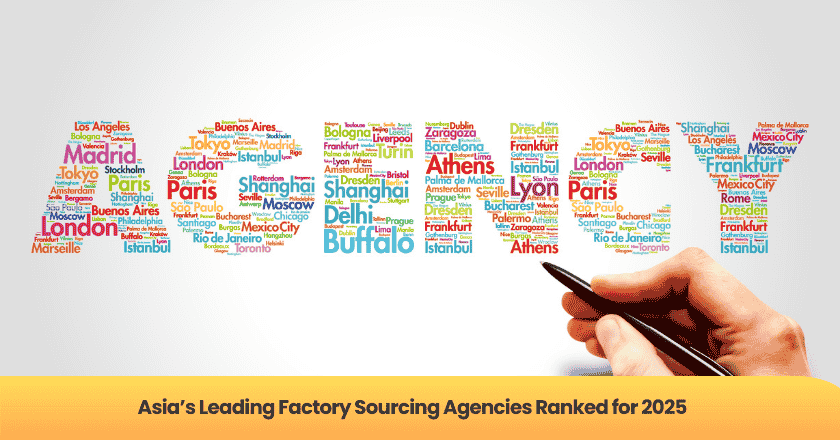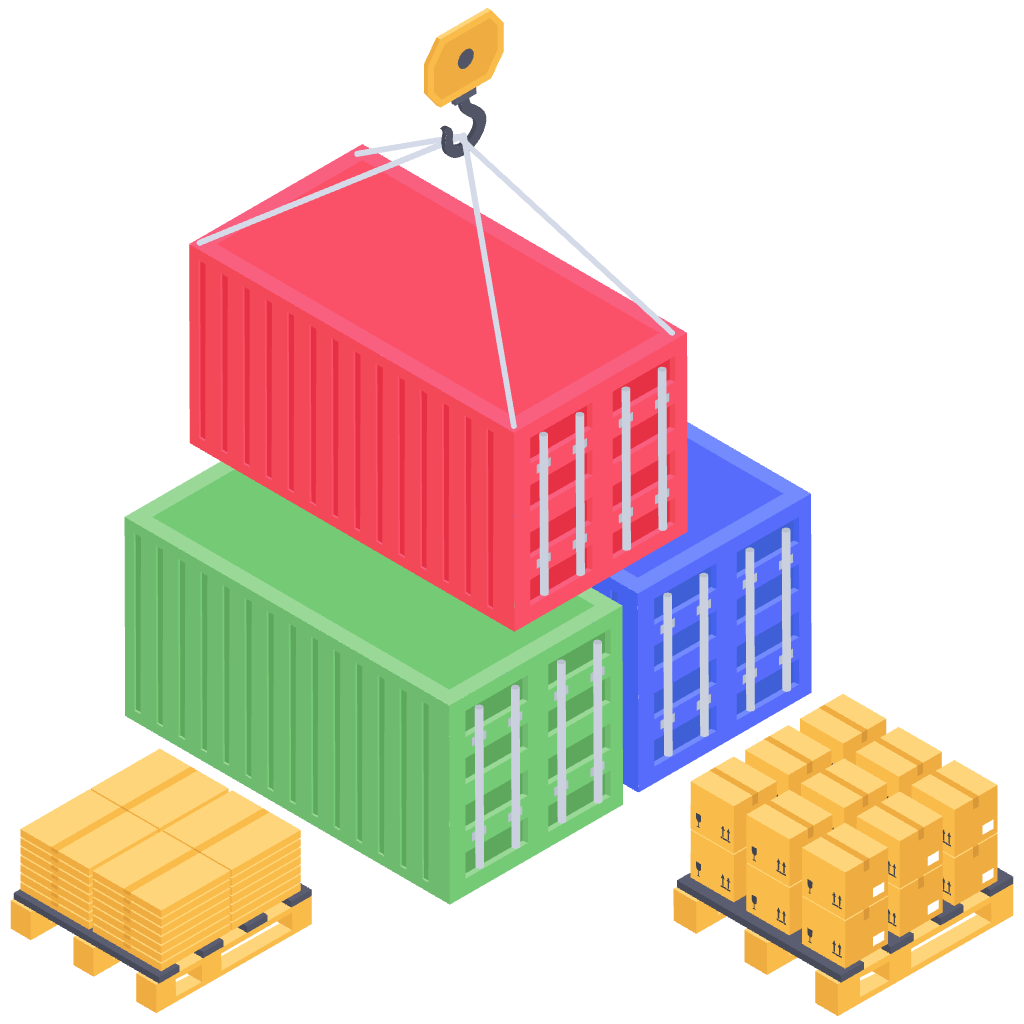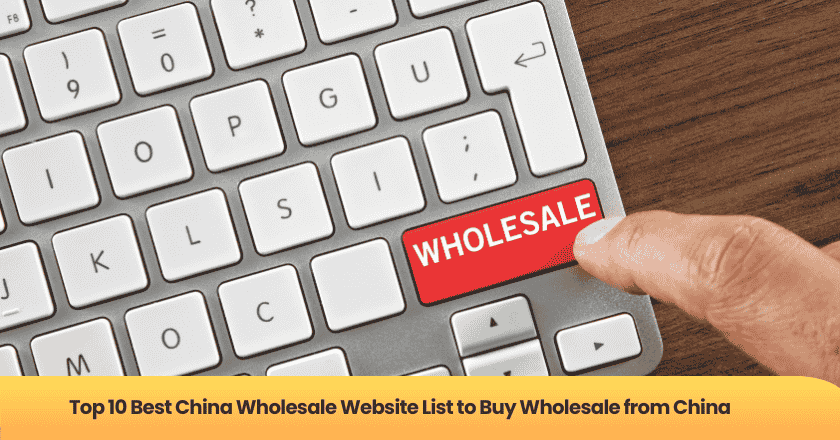
You need the right factory sourcing agency Asia to stay ahead in 2025. Asia remains the backbone of global supply chains, driven by cost advantages and the need for diversification. For example, factory workers in Vietnam and Cambodia earn much less than those in other regions, offering cost efficiency. China, with its complete industrial chain, mature supply chain system and economies of scale, stands as a key global manufacturing hub, capable of meeting both low-cost demands and providing high-end custom production capabilities. Choosing an agency based on reliability, transparency, and deep regional expertise ensures your sourcing strategy adapts to changing market dynamics and risks.
Key Takeaways
- Choose a factory sourcing agency based on reliability, transparency, and regional expertise to enhance your supply chain.
- Evaluate agencies by their core services, industry focus, and local presence to ensure they meet your specific needs.
- Diversify your sourcing locations to reduce risks and adapt to changing market dynamics.
- Ask targeted questions during agency evaluations to assess their experience, communication methods, and quality control processes.
- Invest time in building strong partnerships with clear expectations and regular updates to support long-term growth.
Factory Sourcing Agency Asia: Top 10
| Rank | Agency Name | Core Strengths | Service Highlights | Best For |
|---|---|---|---|---|
| 1 | NewBuyingAgent | one-stop product sourcing services in China | 30+ years of expertise, A network of 50,000 well-cooperating factories, 20,000 products development & quality control experts across China, capable of undertaking orders for full-category products; 8%-20% cost savings, full compensation for quality issues, end-to-end responsibility for the entire process. | Especially for SMEs and e-commerce sellers |
| 2 | SourceOne | 30+ years of sourcing experience across Vietnam, Malaysia, Thailand, India, etc. | Full-chain services: cost analysis, supplier audits, logistics management, door-to-door delivery. | Enterprises needing cross-regional sourcing with strict cost control. |
| 3 | Dragon Sourcing | Global procurement provider with offices in Asia, Europe, and the Americas. | End-to-end solutions, long-term supplier relationship management, risk reduction. | Mid-to-large enterprises seeking global supply chain expansion. |
| 4 | One World Sourcing | Vietnam-focused sourcing agency. | Global procurement, supplier evaluation, logistics coordination, expertise in electronics, apparel, furniture. | Companies relocating production to Vietnam. |
| 5 | ProdSource | Specialized in electronics sourcing in Thailand. | Strict quality control, on-time delivery, production supervision. | Businesses requiring high-reliability electronic component procurement. |
| 6 | Sourci Asia | Thailand-based agency offering one-stop sourcing services. | Procurement management, production oversight, logistics support, flexible for SMEs. | SMEs needing simplified Asian sourcing processes. |
| 7 | Imex Sourcing | Competitive pricing through expert negotiation and factory networks. | Customized sourcing plans, "same-quality, better-price" guarantees. | Cost-sensitive businesses requiring rapid procurement execution. |
| 8 | C2W Group | Southeast Asia-focused sourcing with factory audits and compliance tools. | Risk mitigation via technology (e.g., factory inspection software), labor-intensive industries (textiles, dyeing). | Enterprises needing compliance and risk reduction in Asian supply chains. |
| 9 | Samsung iMarketKorea | Connects factories with artisans and local workshops. | Unique sourcing for home decor, furniture, and textiles with design differentiation. | Brands seeking product uniqueness and ethical sourcing. |
| 10 | Direct Resource Group | Australian agency with strong Asia partnerships, focused on sustainable sourcing. | Eco-friendly fabric and apparel manufacturing, ESG compliance support. | Fashion brands transitioning to sustainable practices. |
This table provides a clear comparison of agencies based on their strengths, services, and ideal client profiles, enabling informed decision-making for Asian sourcing needs.
Tip: When you choose a factory sourcing agency Asia, always evaluate their regional expertise, transparency, and ability to adapt to your business needs. The right sourcing company can transform your supply chain and drive long-term growth.
Sourcing in Asia
Regional Overview
You see Asia as the engine of global sourcing. The region offers unmatched scale, cost advantages, and a wide range of manufacturing capabilities. Companies now use multi-country strategies to reduce risks and increase flexibility. This shift comes from changes in tariffs, geopolitical tensions, and the need for reliable sourcing. You notice that many businesses diversify their sourcing locations to avoid over-reliance on a single country. Southeast Asia, in particular, has become a top destination for product sourcing, while China remains irreplaceable for its comprehensive industrial clusters, from raw material supply to finished product assembly, and its ability to rapidly scale production. The US-China trade war accelerated this trend, with countries like Vietnam and Thailand gaining new investments, but China continues to attract high-tech and advanced manufacturing due to its skilled workforce and infrastructure. Logistics infrastructure and established industrial clusters play a key role in these decisions. However, you must also consider challenges such as port congestion and connectivity issues, which can affect your supply chain.
Key Countries
You find several countries in Asia leading the way in sourcing service and manufacturing. Each offers unique strengths and faces specific challenges.
- You see Vietnam’s rapid growth in electronics, but rising labor costs and a need for skilled workers create new pressures.
- India stands out for its large workforce and strong government backing, positioning it for long-term growth.
- Cambodia attracts you with low production costs and tariff benefits, and new investments show diversification beyond garments.
- China maintains its dominance with a complete industrial ecosystem, covering almost all manufacturing categories. It excels in both mass production and high-precision manufacturing, supported by world-class logistics and a vast pool of technical talent. However, it faces challenges like rising labor costs in coastal areas (pushing some production to inland provinces) and increasing focus on environmental regulations.
You also recognize China’s continued dominance in manufacturing, but many sourcing agents now recommend a balanced approach. Thailand remains a reliable sourcing hub, thanks to its skilled labor and robust logistics. As you plan your Asia sourcing strategy, you gain from understanding each country’s strengths and challenges. This knowledge helps you choose the right partners and build a resilient global sourcing network.
Tip: When you work with sourcing agents in Asia, always assess their local expertise and ability to adapt to changing market conditions. Reliable sourcing depends on strong regional knowledge and proactive risk management.
Asia-Pacific Supply Chains: Trends
Role of Sourcing Agencies
You rely on sourcing agencies to streamline your product sourcing in the Asia-Pacific region. These agencies play a vital role for Amazon sellers, dropshippers, and small retailers. They help you manage supplier relationships, oversee production, and coordinate logistics. You gain access to efficient supply chains and benefit from reliable sourcing, even when you operate on a smaller scale. Agencies with deep roots in China can leverage the country's mature e-commerce infrastructure and cross-border logistics networks to provide faster delivery and more flexible services.
Tip: When you choose a sourcing service, look for agencies that offer comprehensive support and understand your industry’s unique needs.
Opportunities and Challenges
You see many benefits when you diversify your Asia-pacific supply chains. Businesses in Asia create parallel supply chains to reduce geopolitical risks. Many companies establish dual supply chains for the Chinese and US markets. Regional trade agreements open new opportunities and lower tariffs, which can lead to cost savings. Investments in technology help you cut trade operation costs and improve global sourcing efficiency.
- 33% of businesses in the region build parallel supply chains to manage risk.
- 29% set up dual supply chains focused on major markets.
- 38% of leaders see more opportunities from regional trade agreements.
- 30% report cost savings from reduced tariffs.
- 36% note lower trade operation costs due to technology.
However, you must also manage risks. Shifting production across countries can create complexity. You need to monitor compliance, logistics, and supplier reliability. By working with experienced agencies, you can build efficient supply chains and adapt to changing market conditions.
Ranking Criteria
Evaluation Factors
You need clear criteria to identify the best factory sourcing agencies in Asia. The most effective agencies stand out by excelling in several key areas. You should look for agencies that demonstrate transparency, reliability, and a broad service range. Client satisfaction also plays a major role in the ranking process.
Here is a table summarizing the main evaluation factors and how you can measure them:
| Criteria | Measurement Methods |
|---|---|
| Sourcing Capabilities (Supplier Network & Price Competitiveness) | Number of verified cooperative factories across key manufacturing regions; range of supplier types (covering different scales and specialties); speed in matching suppliers for specific products; price competitiveness against market standards; client cost-saving achievements through negotiations. |
| Communication and Collaboration | Use of translators, regular updates via email or video calls, and consideration of time zone differences. |
| Quality Assurance | Material quality inspections, in-line inspections, and final checks using AQL standards. |
You should also consider proof of results, metrics, and reporting. Agencies that provide regular updates and clear documentation help you track progress and ensure accountability. When you choose a sourcing partner, focus on those who offer measurable outcomes and transparent communication.
Tip: Always ask for examples of quality assurance processes and ethical certifications before you commit to a sourcing agency.
Impact on Business
The criteria you use to rank sourcing agencies have a direct effect on your business outcomes. Agencies that excel in these areas help you reduce risks, improve product quality, and build long-term partnerships.
- Reporting serves as tangible evidence of agency impact.
- Agencies that invest in sophisticated reporting see higher client retention rates.
- Clear documentation of performance and ROI validation is crucial for long-term partnerships.
Effective reporting not only showcases the agency's work but also serves as a critical tool for validating ROI. By linking activities to key performance indicators, you can see how your sourcing strategy drives business growth. This approach helps you maintain strong relationships and adapt quickly to market changes.
Choosing the Right Agency
Assessing Needs
You should start by defining your business requirements before selecting a sourcing agency. Consider your product type, target market, and expected order volume. Establish your communication preferences, such as how often you want updates and which channels you prefer. Verify that the agency can meet your production capacity and delivery schedule. Look for agencies with experience in your industry and check if they have the right equipment for your product needs. Set a clear budget and understand the factors that influence pricing, including materials and manufacturing methods. Choose an agency that specializes in your niche to ensure you receive tailored sourcing solutions.
Tip: A well-defined sourcing strategy helps you match with agencies that align with your goals and expectations.
Key Questions
When you evaluate potential partners, ask targeted questions to ensure a good fit:
1. What is your experience with products similar to mine?
2. How do you manage communication and provide updates during the sourcing process?
3. Can you share details about your quality control procedures?
4. What certifications and licenses do your partner factories hold?
5. How do you handle logistics and shipping challenges?
6. What steps do you take to protect intellectual property?
7. How do you address compliance with international regulations?
These questions help you assess the agency’s reliability and ability to deliver consistent results.
Common Pitfalls
Many businesses face challenges when choosing a sourcing agency in Asia. Avoid these common mistakes:
- Inadequate due diligence on suppliers
- Focusing only on price instead of total value
- Poorly defined contracts
- Lack of a local representative for real-time support
- Weak quality control processes
- Overlooking logistics and supply chain management
- Ignoring cultural differences and relationship building
- Failing to protect intellectual property
- Not checking compliance with regulations
- Poor management of production timelines
- Ineffective communication channels
- Neglecting supplier financial health
- No long-term relationship strategy
- Lack of risk management planning
Note: Careful planning and ongoing communication reduce risks and help you build strong, lasting partnerships in your sourcing journey.
Next Steps
Initial Contact
You should start your journey by researching potential agencies that match your business needs. Prepare a clear summary of your product requirements, expected order volume, and quality standards. When you reach out, use concise language and provide all necessary details. This approach helps agencies understand your expectations from the beginning.
- Gather information about the agency’s experience and industry focus.
- Request references or case studies to verify their track record.
- Schedule an introductory call to discuss your project in detail.
Tip: Always ask for a sample report or example of their quality control process. This step gives you insight into their attention to detail and reliability.
Building Partnerships
After your initial contact, focus on building a strong working relationship. Set clear expectations for communication, timelines, and deliverables. Use written agreements to outline responsibilities and protect your interests. Regular updates and transparent reporting help you monitor progress and address issues early.
You should also compare cost-effective options before making a final decision. This process ensures you select the best partner for your sourcing needs. By investing time in due diligence and clear communication, you build a partnership that supports long-term growth.
You now understand how the right factory sourcing agency can transform your supply chain in Asia. Apply the ranking criteria and practical tips from this guide to make informed decisions. Take the next step by starting your research or reaching out to agencies that fit your needs. Your proactive approach will help you build strong, reliable partnerships for long-term success.
FAQ
What is the main advantage of using a factory sourcing agency in Asia?
You gain access to a wide network of reliable suppliers. Agencies help you manage quality control and logistics. You save time and reduce risks by leveraging their local expertise.
How do I choose the best sourcing destination in Asia?
You should compare labor costs, infrastructure, and industry strengths. Evaluate each country's regulations and export capabilities. Select a sourcing destination that matches your product needs and business goals.
What services do sourcing agencies typically offer?
You receive supplier identification, factory audits, production monitoring, and logistics support. Agencies also assist with compliance checks and quality assurance. These services streamline your sourcing process.
How can I ensure product quality when working with an agency?
You should request regular inspection reports and sample testing. Agencies provide updates on production status. Clear communication and defined quality standards help you maintain control over product quality.
What risks should I watch for when sourcing from Asia?
You must monitor supplier reliability, compliance with regulations, and logistics challenges. Agencies help you manage these risks. Stay proactive by reviewing contracts and maintaining open communication.
Get Started Today
Let's Turn Your Sourcing Goals into RealityWeChat:+86 15157124615
WhatsApp:+86 15157124615
Address:Building 10 #39 Xiangyuan Road, Hangzhou, China




